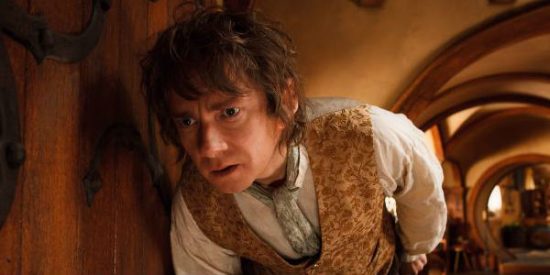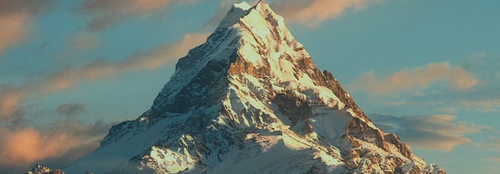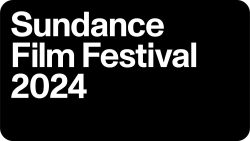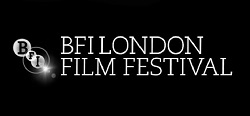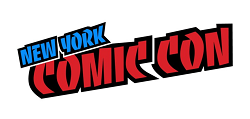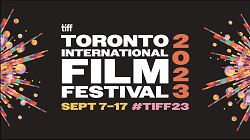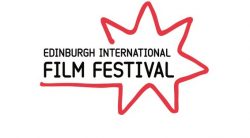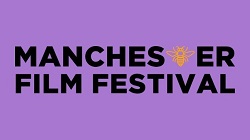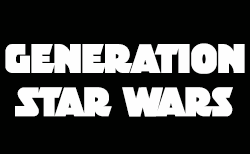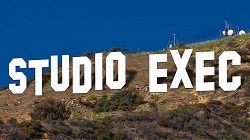The Hobbit Trilogy – A Retrospective
In a hole in the ground there lived a hobbit. That is how it all began. Not with Weathertop stabbing, Moria Balrogging or Rivendell fellowship-forming, but with a cosy, unadventurous hobbit who loved nothing more than minding his own business and a good rasher of bacon. It’s often easy to forget that The Hobbit films are in fact a series of prequels to the Lord of the Rings trilogy. Sequels and prequels are more often than not condemned because of their derivative or simply cloned nature but The Hobbit has always felt like a dug up treasure rather than a recreated one.
With the exponential advancement of film-making technology in the last decade, the inaugural artwork’s time to age and the creative temptation to better an original vision The Hobbit could have suffered terribly from prequelitis. Thankfully though, Peter Jackson, that excellent ball of beard and wonder, has the creative integrity of a snowflake: he can closely replicate beauty and still have it be unique too – much like Tolkien’s own writing.
It’s somewhat ironic that the book with which Tolkien developed his style and skill (The Hobbit), Jackson explored masterfully and the books which Tolkien explored masterfully (LotR), Jackson developed his style and skill. This is likely one of the larger reasons that each of the Middle Earth films marry so well. In honing a magnum opus with LotR, Peter Jackson and co learned how to take creative liberties with source material and develop the world Tolkien envisaged to such to a point that if Wingnut Films were to ever revisit Middle Earth after producing that original trilogy they couldn’t possibly make a film that alienated that vision too much.
Of course, CGI, HFR and 3D all make their mark on the world of The Hobbit in ways that differentiate it fromLord of the Rings but these things are never so strong as to make us physically retch as with the Star Warsprequels* – or, for the sake of an underused fantasy-film example, 2013’s Oz the Great and Powerful.
*- Except perhaps that scene with Radagast’s ailing hedgehog. I’m all for cute hedgehogs but that scene is a bit Eh.
Had Guillermo Del Toro kept hold of the directorial reins we may have seen a very different Hobbit trilogy to the one which has crescendoed magnificently with The Battle of the Five Armies (heck, the series might even have remained a two-parter) but we can be certain that with Peter Jackson at the grown-up’s table the new instalments would never have given us an entirely different Middle Earth, and rightly so.
It’s hard to talk about The Hobbit without drawing comparisons to LotR because they are so akin (from style, right down to their respective trilogy’s core narrative beats) but one of the largest distinctions between them is the presence in The Hobbit of one of the worst current Hollywood trends: multi-part story-splitting. Singular book adaptations being split across multiple movies is such an infuriating ploy from which even the most adored franchises cannot escape criticism (*nudge nudge* The Hunger Games Part 1) but The Hobbit has handled its division so well – even after its aforementioned split from two films into three.
Splitting The Hobbit into two was already enough for some people but the announcement of the 350-ish page book (depending on which edition you’re reading) being broken up further was a move that was met with a fist-pump from some but a huge sigh from most. In retrospect, after rewatching LotR and then all three Hobbit films back-to-back (thank you Cineworld!) as well as re-reading the eponymous novel I am hard pressed to find fault with the split. After all, like any dwarf and his gold, or hobbit and his food, I’d rather have maybe a little too much than a definite too little. I still sob every time I watch most any adaptation of a book I love because of film’s unapologetically short nature (I’m particularly looking at you,Harry Potter series).
Converse to the usual (book slow, movie fast) it is Tolkien’s novel that travels at lightning speed and the movies that take the more detailed path. Don’t get me wrong, The Hobbit is a magnificent piece of fantasy writing. It is rich in plot but its incredible energy spanning so few pages means that the narrative is rushed. So much happens in so few words.
Because of this The Hobbit could undoubtedly have been a very faithful single movie but I can’t see that (particularly in a post-LotR world) audiences would have bestowed much love on it. The speed would cheapen the film’s character breadth and it would feel even less like its methodical, epic kin, which was already a risk.
By splitting the story into three The Hobbit got to explore in much more depth the trials and tribulations of Bilbo, Thorin, Balin, Dwalin, Bifur, Bofur, Bombur, Fili, Kili, Gloin, Oin, Ori, Dori, Nori, Bard and Gandalf. And just for good measure the adaptation of other-written appendices as well as the fluid introduction of originally crafted characters and plots kept alive the multi-perspective story-telling that allowed LotR to keep its energy up.
Compromise and change is necessary in almost any book adaptation and Peter Jackson, Fran Walsh, Phillipa Boyens and Guillermo Del Toro’s tinkering here allows the story to explore its full potential. Among others, events and plots like what happened in the Goblin’s lair, Thorin’s true motivation for reclaiming Erebor, what Gandalf gets up to every time he leaves the dwarf party (which is more frequently than you think) and even the titular battle of the third film got to be elaborated on. Other short but exciting or otherwise uncinematic passages like the barrel escape, pretty much everything to do with Smaug and the series’s climax were made more theatrically entertaining than the book’s versions of events without compromising overall quality.
There are few major criticisms to be made of The Hobbit trilogy but one of the most glaring is the lack of the recurring heart-crushing moments we got in LotR. Martin Freeman’s range is as good as anything but Bilbo lacks a Samwise; Thorin is more an anti-hero to Aragorn’s reluctant hero; and the twelve remaining dwarves all get their small moments (particularly in BotFA) but of which none beat a Gamgee motivational speech, Pippin sing-song or Merry Rohirrim battle.
Of course, this lack of super emotional moments is partly down to the source material but is also quite apt.The Hobbit was, after all, the child of the Middle Earth series: the story with the most jovial and innocent tone before darkness took hold of all once more (which is arguably the best catalyst for a good sobworthy moment). That’s not to say that the series doesn’t have its heavier moments though. Praise should be heaped on the trilogy for doing the whole ‘each sequel is darker and grittier’ thing so well. Bilbo’s journey through mishap, moral corruption and all-out war is some heavy stuff yet the series manages to hold on to its tenderness and comedy through some admittedly horrific events; the third instalment even being the one with the darkest and lightest moments in the trilogy.
So narrative and character jibes aside, we’re left with the complaint that The Hobbit makes far too much use of CGI. The ‘roided out Azog (who, in the book, actually died in the battle at which Thorin made him an amputee) and most of the other orcs don’t particularly benefit from being CGI – LotR got by just fine with live-action orcs after all – but I hardly think this should affect one’s view of the films as a whole. As for the numerous elaborate set-piece battles or hijinks that make extensive use of visual effects we should remember just how hard Weta Workshops pushed new visual effects to show a grim world in LotR. WithThe Hobbit the effects are simply more ‘exciting’ and kinetic (for lack of not wanting to use the word ‘animated’, which the book very arguably is). Again The Hobbit is, after all the lighter, more fairy-tale like story of the franchise and upbeat action set-pieces which are still more impressive than most Hollywood fare help the trilogy achieve that – and really, there’s a lot more live-action stuff than you might think; just watch any of the gazillion making-ofs out there.
The absolute best thing about The Hobbit apart from the fine talent in front of and behind the camera is its seamless episodic nature. When re-watching the trilogy straight through there’s a very quality-drama binge-watch feel as the series’s tone develops slowly and continually alongside the events which happen within each film and as a whole. As such, now that all is said and done, the respective trilogies come off more as a duo of epic mini-series pseudo-anthologies than they do a straightforward film franchise. Individually, each film is good but they absolutely need each other to really shine. When these films do have each other though, they transcend the straightforward film franchise into something else (unlike the entireties of say – again – Harry Potter or Star Wars).
There’s still much love and comment to throw at the Hobbit franchise (from the up-close-and-personal battles, the more imaginative animal kingdom, the foreshadowing of LotR events, Howard Shore’s scores, and how there are so many nice sunsets in The Hobbit yet so many dreary ones in LotR) but I feel that my point has been made: The Hobbit is good. Middle Earth is good. After six films and over 1300 minutes of epic storytelling it’s hard to try and let go of the place. I know we’ve been there and back again but I’m kind of hungry for third breakfast. How about it, Tolkien Estate, can we have The Silmarillion soon, please?
The Hobbit: The Battle of the Five Armies is in UK cinemas now.

